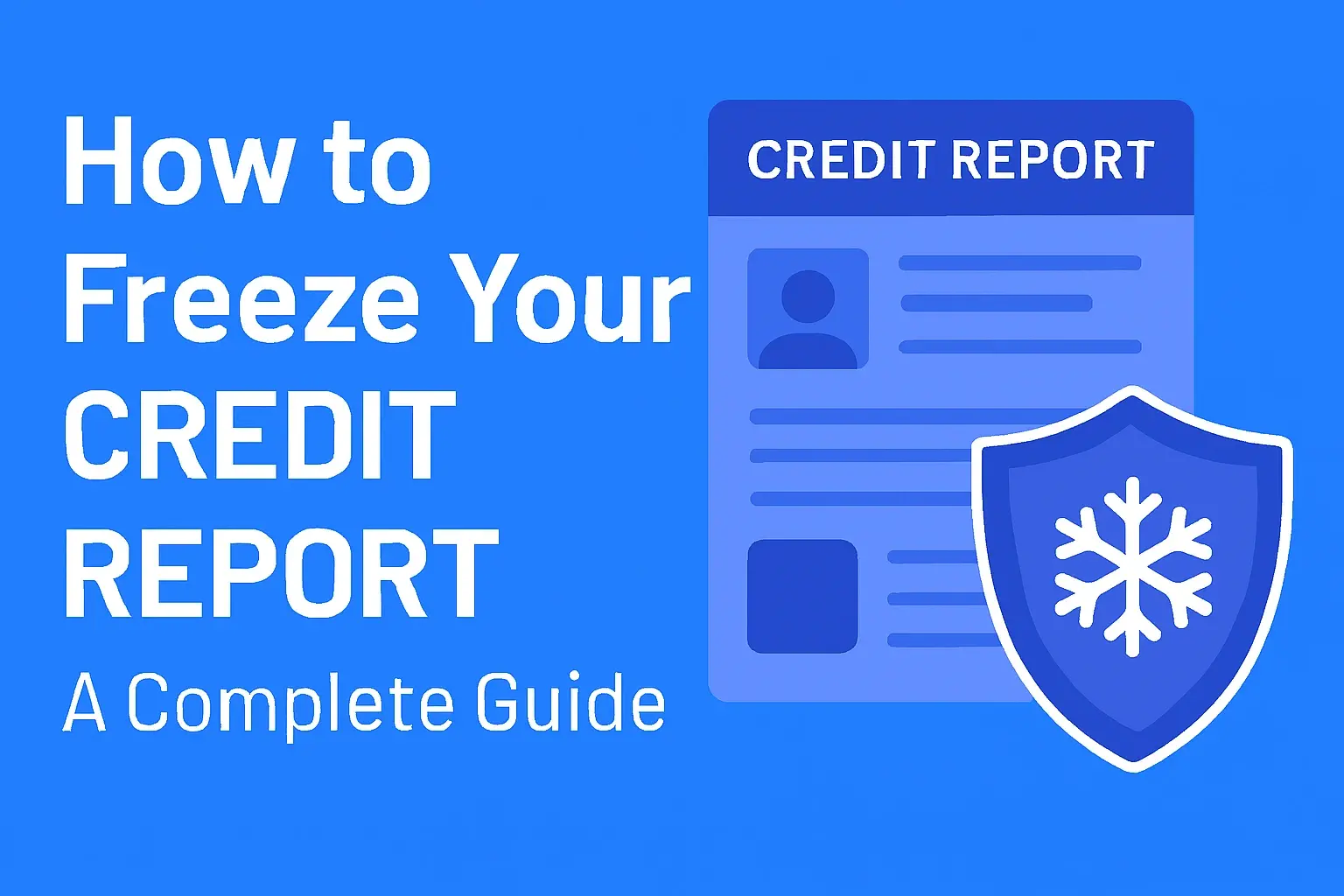-
Posted on: 24 Apr 2025

-
Understanding your credit report and credit score is paramount for financial well-being. This comprehensive guide demystifies these crucial elements, offering actionable insights to improve your financial standing and unlock better opportunities in 2025.
What is a Credit Report?
A credit report is a detailed record of your borrowing and repayment history. It's a comprehensive document compiled by credit bureaus that lenders use to assess your creditworthiness. Think of it as your financial resume, showcasing how you've managed debt over time. It includes information about your loans, credit cards, payment history, outstanding balances, and public records like bankruptcies or liens. In essence, it paints a picture of your financial behavior, providing a basis for lenders to decide whether to extend credit and on what terms.
What is a Credit Score?
Your credit score is a three-digit number, typically ranging from 300 to 850, that summarizes the information in your credit report. It's a snapshot of your credit risk at a particular moment. A higher score indicates a lower risk to lenders, suggesting you are more likely to repay borrowed money. Conversely, a lower score signals a higher risk. This score is calculated using complex algorithms that weigh various factors from your credit report, making it a crucial element in financial decision-making for everything from loans to renting an apartment.
Credit Report vs. Credit Score: The Key Differences
While closely related, your credit report and credit score are distinct entities. The credit report is the raw data, the detailed history of your financial interactions. The credit score is a derived number, a condensed interpretation of that data. Imagine a report card; the credit report is like the detailed breakdown of your grades in each subject, while the credit score is your overall GPA. Lenders examine both to make informed decisions. The report provides the narrative, and the score offers a quick quantitative assessment. Understanding this distinction is fundamental to managing your credit effectively.
The Report is the Story, the Score is the Summary
Your credit report tells the comprehensive story of your credit life. It details every account, every payment, every inquiry. It's a living document that evolves with your financial habits. Your credit score, on the other hand, is a numerical representation of that story's health. A high score suggests a positive narrative of responsible credit management, while a low score implies a narrative with more challenges. Both are vital, but they serve different purposes in the lending process.
How They Interact
The credit score is derived directly from the information contained within your credit report. Changes in your credit report – such as a missed payment, a new loan, or a paid-off debt – will eventually be reflected in your credit score. This makes it essential to monitor both regularly. A clean and accurate credit report is the foundation for a healthy credit score. Without the detailed information in the report, the score would have no basis for calculation.
How Credit Reports Are Generated
Credit reports are compiled by three major credit bureaus in the United States: Equifax, Experian, and TransUnion. These bureaus collect vast amounts of data from various sources, primarily lenders and creditors. When you open a credit account, such as a credit card or a loan, the financial institution typically reports your account activity to these bureaus. This includes information like your payment history, credit limits, balances, and the age of the account. The bureaus then organize this information into individual credit reports for consumers.
The Role of Credit Bureaus
Equifax, Experian, and TransUnion are the gatekeepers of credit information. They act as central repositories, gathering data from thousands of lenders, credit card companies, mortgage lenders, and even some utility and rental companies. Their primary function is to maintain accurate and up-to-date credit files for consumers. While they collect the data, they do not make lending decisions; that remains the purview of the lenders who access these reports.
Data Sources for Credit Reports
The information found on your credit report originates from a variety of sources:
- Lenders and Creditors: This is the most significant source, including banks, credit card companies, auto lenders, and mortgage providers. They report payment history, balances, credit limits, and account status.
- Public Records: Information from court records, such as bankruptcies, liens, judgments, and civil lawsuits, can appear on your report.
- Collection Agencies: If a debt is sent to collections, the collection agency will report this information.
- Credit Inquiries: When you apply for credit, lenders make inquiries to review your credit report. Both "hard" and "soft" inquiries are noted, though only hard inquiries typically affect your score.
The Components of a Credit Report
A credit report is divided into several key sections, each providing a different piece of your financial puzzle. Understanding these components is crucial for identifying any inaccuracies and for grasping how your credit behavior is being perceived.
Personal Information
This section includes your name, current and previous addresses, Social Security number, date of birth, and employment information. It's vital to ensure this information is accurate, as discrepancies could lead to identity theft or misidentification.
Credit Accounts
This is the core of your credit report. It lists all your active and closed credit accounts, including:
- Type of Account: Credit card, installment loan (e.g., mortgage, auto loan), student loan, etc.
- Creditor Name: The name of the lender or credit card company.
- Account Number: Often partially masked for security.
- Date Opened: When the account was established.
- Credit Limit/Loan Amount: The maximum amount you can borrow or the original loan amount.
- Current Balance: The amount you currently owe.
- Payment History: This is one of the most critical parts, detailing whether payments were made on time, late, or missed. It typically shows a history of the last 24 months.
- Status: Open, closed, paid, delinquent, charged off, etc.
Public Records and Collections
This section details any negative public information associated with your credit history. This can include:
- Bankruptcies: Chapter 7, 11, or 13 filings.
- Liens: Tax liens or other legal claims against your property.
- Judgments: Court decisions against you, often for unpaid debts.
- Collections Accounts: Debts that have been sent to a collection agency.
Information in this section can significantly impact your credit score and remains on your report for an extended period (e.g., bankruptcies can stay for 7-10 years).
Credit Inquiries
This section lists all the times your credit report was accessed. There are two types:
- Hard Inquiries: Occur when you apply for new credit (e.g., a loan or credit card). These can slightly lower your credit score.
- Soft Inquiries: Occur when you check your own credit, or when a company checks your credit for pre-approved offers or background checks. These do not affect your credit score.
Lenders review this section to see how often you're seeking new credit, as frequent applications might indicate financial distress.
Understanding Credit Scoring Models
Your credit score isn't just a random number; it's calculated using sophisticated statistical models. The most widely used scoring models are developed by FICO and VantageScore. While they have different methodologies, they generally assess the same core factors of your credit behavior.
FICO Scores
FICO (Fair Isaac Corporation) is the most prevalent credit scoring model. They have various versions, with FICO Score 8 being one of the most common. FICO scores are used by the vast majority of lenders. Their models are proprietary, but the general factors they consider are well-known.
VantageScores
VantageScore is a newer scoring model developed collaboratively by the three major credit bureaus. It's designed to be more consistent across the bureaus and often provides scores for consumers who may not have enough credit history for a FICO score. VantageScore 4.0 is the latest iteration.
How Scores Are Calculated: General Principles
Both FICO and VantageScore models weigh several key factors. While the exact percentages vary, the general importance of each category is consistent:
- Payment History (approx. 35%): This is the most significant factor. Paying bills on time is crucial. Late payments, defaults, and collections have a severe negative impact.
- Amounts Owed (approx. 30%): This refers to your credit utilization ratio – the amount of credit you're using compared to your total available credit. Keeping this ratio low (ideally below 30%) is important.
- Length of Credit History (approx. 15%): A longer history of responsible credit use generally results in a higher score.
- Credit Mix (approx. 10%): Having a mix of different credit types (e.g., credit cards, installment loans) can be beneficial, showing you can manage various forms of debt.
- New Credit (approx. 10%): Opening many new accounts in a short period can negatively impact your score, as it might suggest increased risk.
Factors That Influence Your Credit Score
Your credit score is a dynamic number that reflects your financial habits. Understanding which factors have the most impact allows you to focus your efforts on improving your creditworthiness. These factors are directly derived from the information in your credit report.
Payment History
This is the single most important factor. Consistently paying your bills on time, every time, is the bedrock of a good credit score. Even a single late payment can cause a significant drop. Late payments are typically reported after 30 days past the due date. More severe delinquencies, such as 60 or 90 days late, have an even greater negative effect.
Credit Utilization Ratio (CUR)
Your CUR is the ratio of your outstanding credit card balances to your total credit card limits. For example, if you have a credit card with a $10,000 limit and owe $3,000, your CUR is 30%. Lenders view a high CUR as a sign of financial strain, suggesting you might be overextended. Experts recommend keeping your CUR below 30%, and ideally below 10%, for the best results. This applies to individual cards and your overall credit card debt.
Length of Credit History
This factor considers the age of your oldest credit account, the age of your newest account, and the average age of all your accounts. A longer history of responsible credit management demonstrates to lenders that you have a proven track record. Therefore, closing old, unused credit cards can sometimes negatively impact this aspect of your score, especially if they are your oldest accounts.
Credit Mix
Having a variety of credit types can be beneficial. This includes revolving credit (like credit cards) and installment credit (like mortgages, auto loans, or personal loans). Managing different types of credit successfully shows lenders you can handle various financial obligations. However, it's not advisable to open new accounts solely to improve your credit mix; focus on responsible management of existing accounts.
New Credit and Inquiries
When you apply for new credit, lenders typically perform a "hard inquiry" on your credit report. A few hard inquiries over a long period are usually not a major concern. However, a cluster of hard inquiries in a short timeframe can signal that you're in financial distress or taking on too much debt too quickly, which can lower your score. It's generally wise to avoid applying for multiple credit accounts simultaneously.
Negative Information
Any negative marks on your credit report, such as late payments, defaults, collections, bankruptcies, or foreclosures, will significantly lower your credit score. The impact of these items diminishes over time, but they can remain on your report for up to 7-10 years, continuing to affect your score.
Credit Score Ranges and What They Mean in 2025
Credit scores are typically presented on a scale, with higher numbers indicating better creditworthiness. While the exact ranges can vary slightly between scoring models (FICO and VantageScore), the general interpretation remains consistent. In 2025, lenders continue to rely heavily on these scores to make lending decisions.
Score Range (FICO/VantageScore) Category Implications 800-850 Exceptional Excellent credit. You'll likely qualify for the best interest rates and terms on loans and credit cards. Lenders see you as very low risk. 740-799 Very Good Strong credit. You'll generally qualify for favorable loan terms and interest rates. Considered a low-risk borrower. 670-739 Good Decent credit. You can qualify for most loans and credit cards, though perhaps not always with the absolute lowest interest rates. 580-669 Fair Limited credit. You may struggle to qualify for credit, or you might be approved with higher interest rates and less favorable terms. Subprime lending may be an option. 300-579 Poor Very limited credit or significant negative history. You will likely face difficulty obtaining credit and may need to consider secured credit cards or co-signers. Higher risk borrower. Understanding the Tiers
Each tier represents a different level of risk for lenders. A score in the "Exceptional" range signals that you are a highly reliable borrower, while a score in the "Poor" range indicates a significant risk. This is why maintaining a good credit score is so important for accessing financial products and services at competitive rates.
Score Fluctuations
It's important to remember that your credit score is not static. It can change based on your ongoing credit activity. For instance, paying down a large credit card balance can improve your score, while missing a payment can cause it to drop. Regularly monitoring your score helps you stay aware of these changes.
Why Your Credit Score Matters
Your credit score is more than just a number; it's a powerful indicator of your financial health and significantly influences many aspects of your life. In 2025, its importance continues to grow as lenders and other entities increasingly rely on it for decision-making.
Loan and Credit Card Approvals
The most direct impact of your credit score is on your ability to get approved for loans (mortgages, auto loans, personal loans) and credit cards. Lenders use your score to assess the risk of lending you money. A low score can lead to outright rejection or approval with very unfavorable terms.
Interest Rates
This is where a good credit score truly pays off. Borrowers with higher scores qualify for lower interest rates. Over the life of a loan, even a small difference in interest rate can save you thousands of dollars. For example, a difference of 2% on a 30-year mortgage can amount to tens of thousands of dollars in savings.
Rental Applications
Landlords often check credit scores to gauge the reliability of potential tenants. A good score suggests you are responsible and likely to pay rent on time. A poor score might lead to a rejection or a requirement for a larger security deposit or a co-signer.
Insurance Premiums
In many states, insurance companies use credit-based insurance scores to help determine premiums for auto and homeowners insurance. Studies have shown a correlation between credit behavior and the likelihood of filing claims, so a better credit score can lead to lower insurance costs.
Utility and Cell Phone Deposits
Utility companies and cell phone providers may check your credit history. If you have a low score, you might be required to pay a security deposit to open an account, which is typically refunded after a period of on-time payments.
Employment Opportunities
Some employers, particularly in industries involving financial responsibility or security clearances, may request to review your credit report as part of the hiring process. While they typically cannot see your credit score, they can see your credit history, including any negative marks.
How to Obtain Your Credit Report
Accessing your credit report is a fundamental step in managing your credit. Fortunately, there are several ways to do so, ensuring you can stay informed about your financial standing.
AnnualCreditReport.com
By federal law, you are entitled to one free credit report from each of the three major credit bureaus (Equifax, Experian, and TransUnion) every 12 months. The official source for these free reports is AnnualCreditReport.com. Due to the ongoing impact of the pandemic, you can currently access your reports weekly from each bureau online. This is the most reliable and recommended way to get your official reports.
Through Credit Card Companies and Banks
Many credit card issuers and banks now offer free access to your credit score (and sometimes even your full report) as a benefit to their customers. This is often provided through their online portals or mobile apps. While these scores might be from a different model than what a lender uses, they provide a good general indication of your credit health.
Credit Monitoring Services
Various services offer credit monitoring, often providing regular access to your credit reports and scores. Some are free, while others come with a subscription fee. These services can be useful for ongoing tracking and alerts about changes to your credit file.
How to Obtain Your Credit Score
While credit reports provide the detailed history, credit scores offer a quick summary. Fortunately, obtaining your score is often easier than getting your full report.
Free Online Sources
As mentioned, many credit card companies, banks, and financial apps provide free access to your credit score. Examples include Credit Karma, Credit Sesame, and services offered directly by your bank or credit card provider. These often use VantageScore models but are valuable for monitoring trends.
Through AnnualCreditReport.com
While AnnualCreditReport.com primarily provides your credit reports, some of the bureaus may offer a free credit score along with the report, or at a discounted rate, as part of their services.
Paid Credit Monitoring
Subscription-based credit monitoring services typically provide access to your credit score, credit reports, and alerts for significant changes. These can offer more comprehensive protection and insights, especially if you are concerned about identity theft.
Common Errors on Credit Reports and How to Fix Them
Inaccuracies on credit reports are more common than you might think. These errors can negatively impact your credit score, potentially costing you money in higher interest rates or even leading to loan rejections. It's crucial to review your reports regularly and dispute any discrepancies.
Types of Errors
Common errors include:
- Incorrect Personal Information: Wrong addresses, names misspelled, or incorrect employment details.
- Accounts That Aren't Yours: Fraudulent accounts opened in your name.
- Incorrect Account Status: An account reported as delinquent when it was paid on time.
- Duplicate Entries: The same debt listed multiple times.
- Incorrect Balances or Credit Limits: Errors in the reported amounts owed or available credit.
- Outdated Information: Negative information that should have been removed from your report (e.g., after the statutory period).
The Dispute Process
If you find an error, you have the right to dispute it with the credit bureau that generated the report. The process generally involves:
- Gather Evidence: Collect any documents that support your claim (e.g., payment statements, court records).
- Contact the Credit Bureau: You can usually initiate a dispute online through the credit bureau's website, by mail, or by phone. Most prefer online submissions.
- Provide Details: Clearly state the error and provide the evidence you've gathered.
- Bureau Investigation: The credit bureau is required to investigate your dispute, usually within 30 days (45 days if you submit new information during the investigation). They will contact the furnisher of the information (e.g., the lender) for verification.
- Resolution: If the information is found to be inaccurate, it will be corrected or removed. If the dispute is denied, the bureau must provide you with the reason and information on how to proceed.
You can also dispute information directly with the creditor that reported it, which can sometimes expedite the process.
Strategies to Improve Your Credit Score
Improving your credit score is a marathon, not a sprint, but with consistent effort and smart financial habits, significant gains are achievable. Focusing on the key factors that influence your score is paramount.
Pay Bills On Time, Every Time
This cannot be stressed enough. Set up automatic payments or reminders to ensure you never miss a due date. Even one late payment can significantly damage your score.
Reduce Credit Utilization
Aim to keep your credit utilization ratio below 30%, and ideally below 10%. Pay down balances on your credit cards. If you have multiple cards, focus on paying down the one with the highest utilization first, or the one with the highest interest rate.
Avoid Opening Too Many New Accounts
While a good credit mix can help, applying for numerous new credit accounts in a short period can hurt your score. Only apply for credit when you truly need it.
Check Your Credit Reports Regularly
As discussed, errors can occur. Regularly reviewing your reports from Equifax, Experian, and TransUnion allows you to catch and dispute inaccuracies promptly.
Consider a Secured Credit Card
If you have a poor credit history or no credit history, a secured credit card can be an excellent tool. You provide a cash deposit, which becomes your credit limit. Using this card responsibly and paying it off monthly can help build or rebuild your credit.
Become an Authorized User
If a trusted friend or family member with excellent credit adds you as an authorized user on their credit card, their positive payment history can reflect on your credit report, potentially boosting your score. However, be aware that their negative activity could also impact you.
Settle Debts Strategically
If you have accounts in collections, it's often beneficial to settle them. While the settled debt may still appear on your report, it's better than an outstanding collection account. Negotiate with the collection agency for the best possible settlement terms.
Be Patient
Credit repair takes time. Negative information typically stays on your report for 7-10 years. Focus on consistent, responsible behavior, and your score will gradually improve.
Credit Monitoring Services
In today's digital landscape, protecting your credit information is more important than ever. Credit monitoring services offer a proactive approach to safeguarding your financial identity and keeping track of your credit health.
How They Work
These services typically work by:
- Tracking Credit Reports: They regularly pull your credit reports from one or more of the major bureaus.
- Monitoring for Changes: They alert you to significant activity on your credit file, such as new accounts opened, changes in address, or inquiries.
- Providing Credit Scores: Many services offer access to your credit score, often updated monthly or more frequently.
- Identity Theft Protection: Some services include features like dark web monitoring, identity theft insurance, and restoration services in case your identity is compromised.
Benefits of Credit Monitoring
- Early Detection of Fraud: Quick alerts can help you spot and address fraudulent activity before it causes significant damage.
- Convenience: Centralizes access to your credit information and scores.
- Insight into Credit Health: Helps you understand how your actions affect your score and track progress.
- Peace of Mind: Knowing your credit is being watched can reduce anxiety about identity theft.
Choosing a Service
When selecting a credit monitoring service, consider:
- Cost: Many offer free basic services, while premium features come with a monthly fee.
- Credit Bureaus Covered: Does it monitor all three major bureaus?
- Alert Frequency and Detail: How quickly and thoroughly are you notified of changes?
- Additional Features: Does it offer identity theft insurance, restoration services, or educational resources?
Popular options include Credit Karma (free, VantageScore), Credit Sesame (free, VantageScore), and paid services like Experian IdentityWorks, Equifax Complete, and Identity Guard.
The Future of Credit Reporting and Scoring
The world of credit reporting and scoring is constantly evolving. As technology advances and consumer needs change, we can anticipate several key developments in the coming years.
Alternative Data Integration
There's a growing trend towards incorporating "alternative data" into credit scoring models. This could include things like rent payments, utility bills, and even cash flow data from bank accounts. The goal is to provide a more inclusive picture of creditworthiness, especially for individuals with limited traditional credit histories.
Enhanced Fraud Detection
With increasing cybersecurity threats, credit bureaus and scoring models are likely to invest further in sophisticated AI and machine learning to detect and prevent fraudulent activity more effectively. This includes real-time monitoring and advanced analytics.
Personalized Credit Insights
Expect credit monitoring and scoring services to offer more personalized advice and recommendations. Instead of just showing your score, they may provide tailored strategies for improvement based on your specific financial situation and goals.
Regulatory Changes
As data privacy and consumer protection become more prominent concerns, regulatory bodies may introduce new rules governing how credit information is collected, used, and reported. This could lead to greater transparency and stronger consumer rights.
Continued Evolution of Scoring Models
FICO and VantageScore will undoubtedly continue to refine their algorithms. We may see models that are more sensitive to emerging financial behaviors and better at predicting risk in a dynamic economy.
Staying informed about these trends will be crucial for consumers to navigate the future of credit effectively. Understanding your credit report and score remains the cornerstone of financial success.
In conclusion, your credit report and credit score are indispensable tools for navigating the financial landscape. They are intricately linked, with your report serving as the detailed history and your score as its numerical summary. By understanding how these are generated, what factors influence them, and how to access and interpret them, you gain significant power over your financial future. Regularly reviewing your credit reports for errors and diligently practicing responsible credit management—paying bills on time, keeping utilization low, and maintaining a long credit history—are the most effective strategies for improving and maintaining a healthy score. In 2025 and beyond, a strong credit profile will continue to unlock better interest rates, easier approvals for loans and rentals, and ultimately, greater financial freedom. Take control of your credit today.











